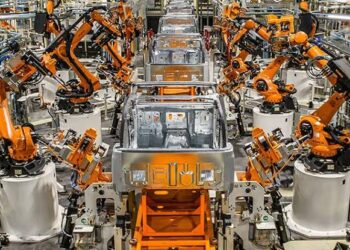Rivian’s recent decision to lay off around 600 employees highlights the fundamental contradictions facing the electric vehicle industry. The company’s rapid expansion was largely fueled by US federal tax incentives, but when these subsidies expired, demand weakened. This exposes a core tension: achieving profitability in high-tech manufacturing remains challenging when market access is contingent on state support and consumer subsidies rather than sustainable economic structures.
Rivian’s difficulties are further complicated by high tariffs on imported auto parts, rising production costs, and intense competition from Tesla and legacy automakers. These factors demonstrate how global trade policies and corporate strategies intersect to squeeze profit margins, forcing companies to restructure their supply chains and invest domestically, often at the expense of workers. The layoffs are not simply a result of mismanagement; they are a rational response within a corporate system that prioritizes cost efficiency and investor returns over labor stability.
Although Rivian anticipates a surge in quarterly revenue and narrowing losses, these figures mask the broader instability. The company’s adjustment of its annual delivery forecast highlights the fragility of demand once temporary incentives disappear. Rivian is now focusing on streamlining operations at its Normal, Illinois, plant, seeking to reduce costs and improve efficiency – a strategy that will likely include further workforce reductions.
The upcoming R2 models, designed to target lower-price segments and compete with Tesla’s Model Y, reflect a capitalist imperative: expanding the market while defending profit margins. By diversifying beyond the luxury R1 line, Rivian aims to stabilize revenue streams in the face of declining incentives. However, this strategy is also constrained by the competitive pressures of a concentrated industry dominated by a few large players.
In summary, Rivian’s challenges exemplify the systemic pressures inherent in contemporary capitalist production, including dependence on state subsidies, globalized supply chains vulnerable to tariffs, and the relentless drive to satisfy investor expectations. The layoffs, production adjustments, and market repositioning are not anomalies; they are predictable outcomes of the structural logic of capitalist accumulation.












